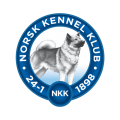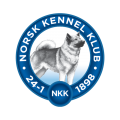Breeding
Article first cited under Breeding
8 files
-

-

-

-

-
 By Astrid Indrebø
By Astrid Indrebø
One of our DogWellNet Experts
An article about functional anatomy by Astrid Indrebø, PhD, DVM, Veterinary scientific director, Norwegian Kennel Club
Adjunct professor, Norwegian School of Veterinary Science,
Department of Companion Animal Clinical Sciences
Box 8146 Dep., N-0033 Oslo, Norway
Illustrations from “Canine Terminology” by Harold Spira (with permission)
excerpt...
"Sound conformation is the key to sound function. Severe bite faults and lack of teeth, loose eyelids, forward placed shoulders, steep shoulder or upper arm, too long or too short loin, carp loin, sloping croup, bandy legged or cow hocked – these are the expressions that are used in the show ring in order to describe faults that cause deductions of the dog’s rating.
Not only do these words describe pure conformation faults – but these are faults that to a large extent affect the dog’s function and soundness.
A dog must be healthy to be classified as beautiful in the show ring – no matter the breed, purpose or size!"
This article is a MUST READ for dog breeders!
-
 Sofia Malm's presentation given at the 2015 Tufts' Canine and Feline Breeding and Genetics Conference
Sofia Malm's presentation given at the 2015 Tufts' Canine and Feline Breeding and Genetics Conference
"The Swedish Kennel Club (SKK) owes its existence to the work of breeders and the results of their efforts. This is why breeding issues are given such prominence within the organization and why SKK dedicates substantial resources to helping breeders breed dogs in a way which benefits both the individual dog and the development of the various breeds."
This article provides an overview of the SKK's working programs and strategies to improve health in purebred dogs. Genetic health programs, use of Molecular genetic tests as well as a focus on the need for an international approach to management of breed health are discussed.
-
 This article discusses the benefits and risks to imposing extensive health requirements on the breeding of dogs, and outlines the alternate approach of the Norwegian Kennel Club.
This article discusses the benefits and risks to imposing extensive health requirements on the breeding of dogs, and outlines the alternate approach of the Norwegian Kennel Club.
Animal welfare in modern dog breeding by Astrid Indrebø (one of our DogWellNet Experts)
from: Acta Veterinaria Scandinavica
Acta Veterinaria Scandinavica 2008, 50(Suppl 1):S6 doi:10.1186/1751-0147-50-S1-S6
-
 Breeding Strategies and Their Application
Breeding Strategies and Their Application
Revealing the fundamentals by Peter Friedrich
(German Kennel Club, VDH)
excerpt...
"The serious breeder is demanding and wants to employ well thought out breeding strategies for the good of his stock. Such strategies are built by defining goals, collecting relevant information, planning ma-tings, checking the outcomes and evaluating their achievements. Taken together, the breeders apply classic problem solving strategies. This is not easy, but it is the only way to achieve progress, as I would like to il-lustrate in the following discussion. Let me begin with a brief summary. This is not to denigrate personal inspiration or intuition: this is equally important and, in fact problem solving and intuition complement each other exceptionally well."



